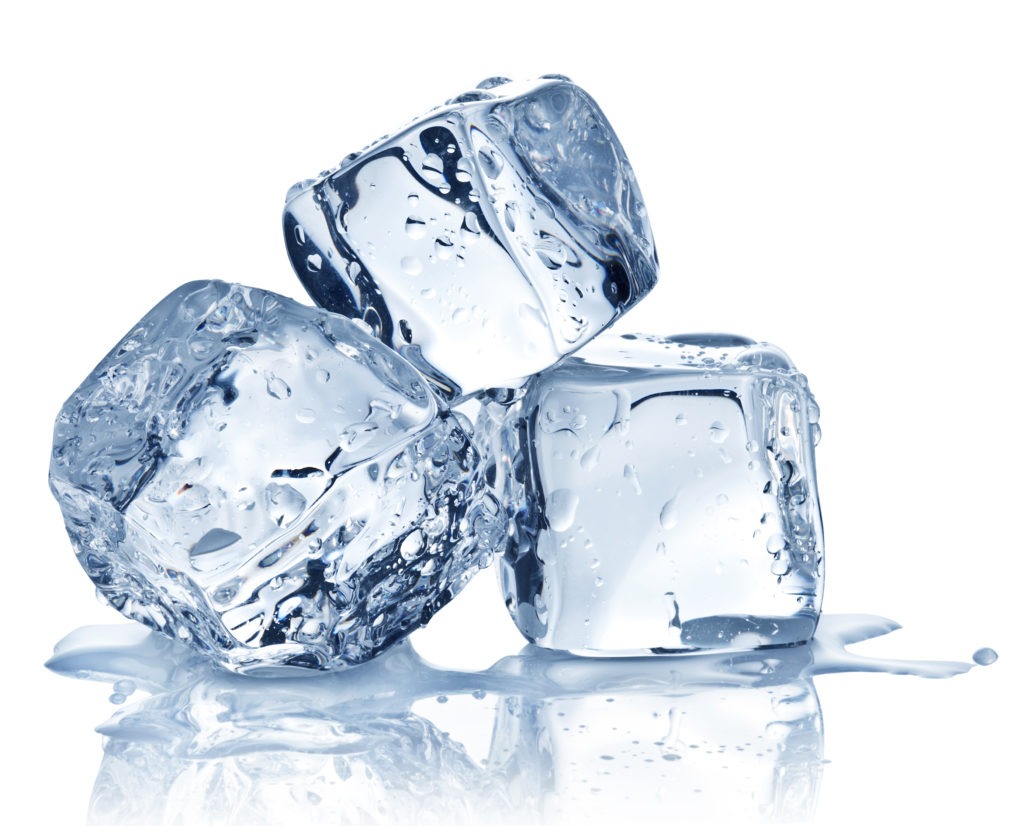
Parental Note: This experiment is geared towards ages 10 and up to be completed independently. The project may require some support to gather materials, keep time, and complete the data chart. The experiment can be completed by younger children (ages 7 and up), but parental/adult support is suggested for all steps.
Additional Note: This experiment will take roughly 4 hours to complete; this calculation takes into consideration both setup time and the time needed to collect and analyze data.
Experiment Overview:
Ice forms when water freezes. Pure distilled water has a melting/freezing point of 0°C (32°F). At this temperature, water molecules in an ice cube will melt and then freeze again at a constant rate, which keeps the ice cube in a stable solid state. On a hot summer day, have you ever noticed that the ice cubes in a glass of water or lemonade melt into a liquid extra fast? That is because the heat from the sun causes water in the ice to turn from solid to liquid.
Temperature is not the only thing that affects how a liquid melts and freezes. Many of the water bodies on our planet contain different types of dissolved substances; for example, the oceans contain a lot of dissolved salts. A substance that dissolves in water is called a soluble substance or solute. When water contains solutes, such as salt, it becomes a chemical solution. In a solution, there is a solute (salt in this case) that gets dissolved in a solvent (water in this case). When certain solutes are mixed with water/ice, they lower the melting/freezing point below 0°C. This makes the ice melt at a lower (colder) temperature than normal and means that water needs to be colder than 0°C to turn from a liquid back into a solid. In this science activity, you’ll investigate how several soluble substances (salt, sugar, and flour) affect water’s freezing point.
Before beginning, think about the following questions and write down your predictions:
- Do you think all of the ice cubes will melt at the same time? Why?
- If you said “no” to question 1, which ice block do you think will be the first to completely finish melting?
- Do you think there will be a big difference between the ice block that melts the fastest and the ice block that melts the slowest?
Experiment Materials:
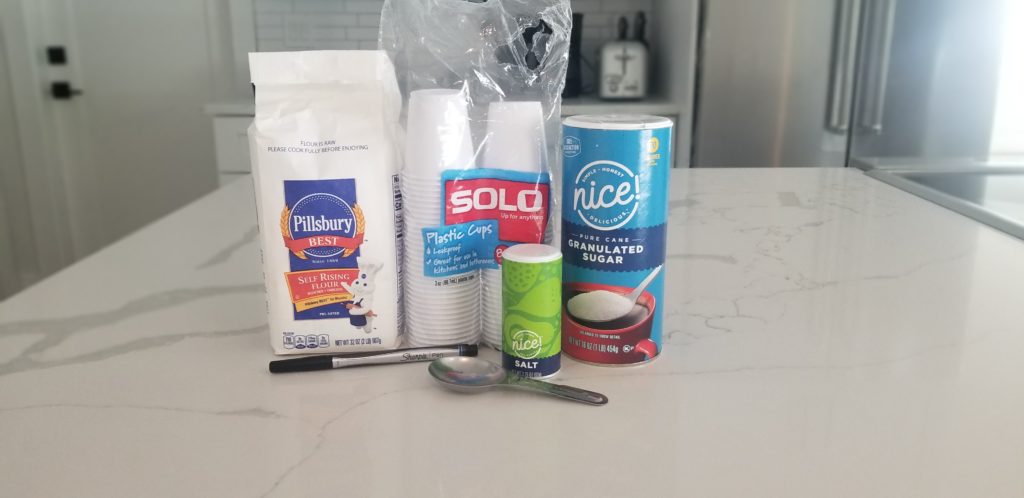
- 3 oz Dixie Cups (can be plastic or paper)
- 1 Tablespoon of the following:
- Table Salt
- Granulated Sugar
- Flour
- Water
- Freezer (0°C)
- Sharpie Marker
- Paper and Pen
- Stopwatch
Experiment Process:
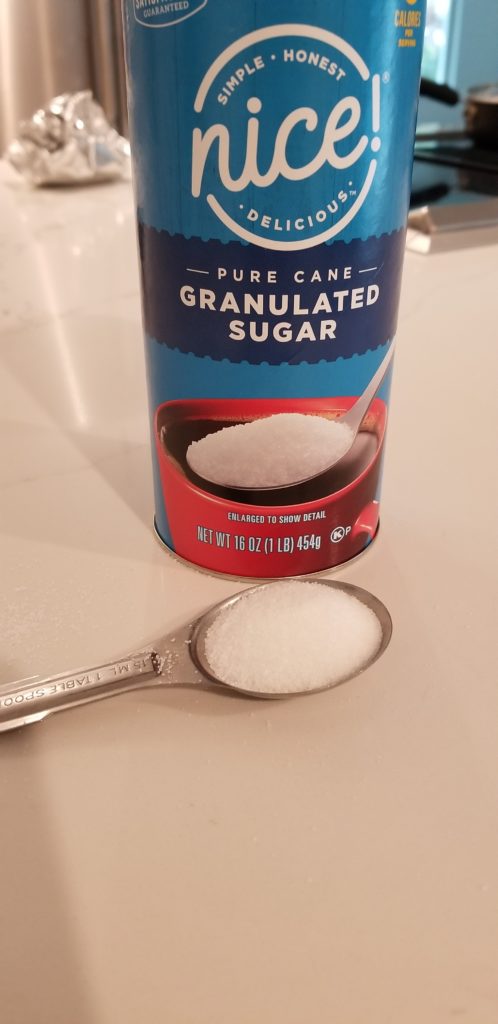
Step 1
Measure one tablespoon of each substance and place in four separate Dixie cups.
Step 2
Label each cup with the name of the substance it contains.
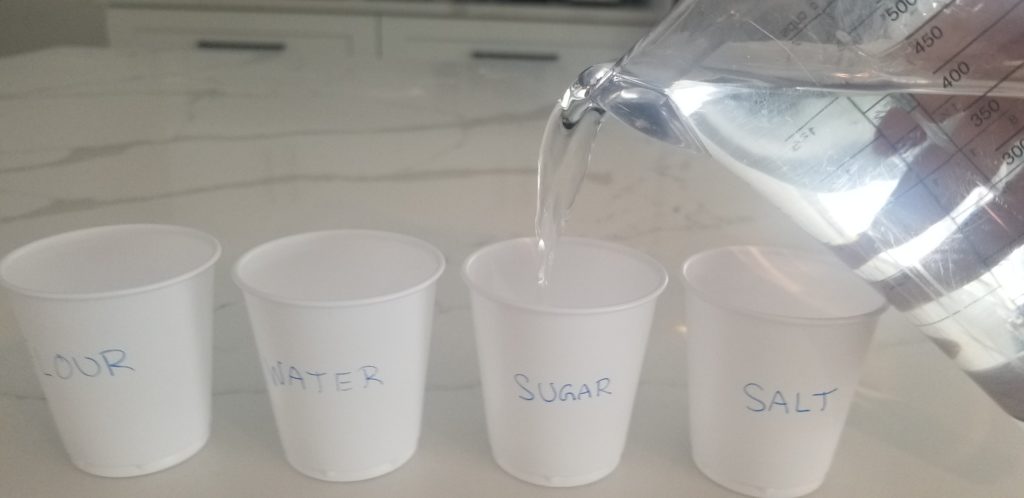
Step 3
Pour an equal amount of water in each Dixie. Fill the cups so that they are almost full to the top. Stir very gently until the substances are fully dissolved (note: the flour and water mixture will turn into pancake batter). Be careful not to spill any water out of the cups while stirring.
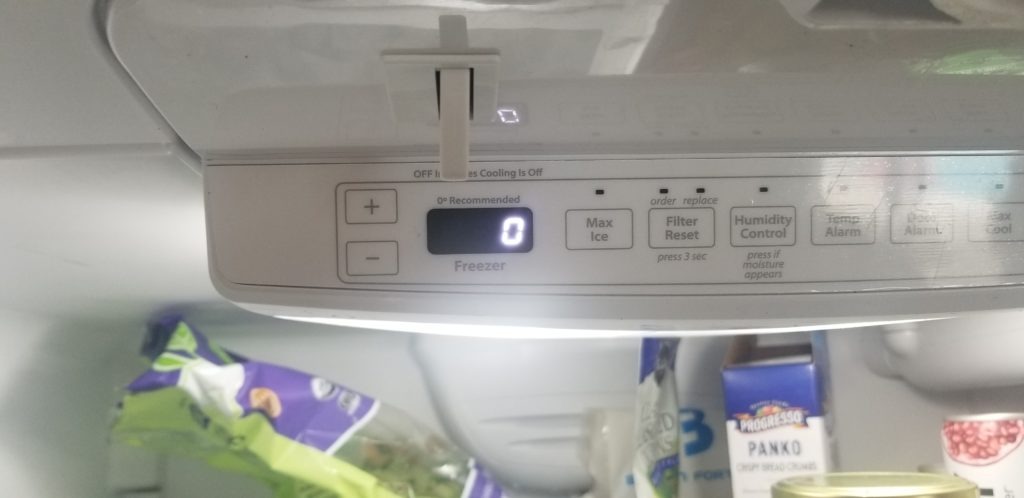
Step 4
Place the cups in a freezer for 2 hours. Make sure the freezer is set to 0°C or colder.
Step 5
While you wait for the ice cubes to form, create a chart where you can record the time (minutes) it takes for each ice cube sample to melt.
| WATER | SALT | FLOUR | SUGAR |
| ______ min. | ______ min. | _____ min. | ______ min. |
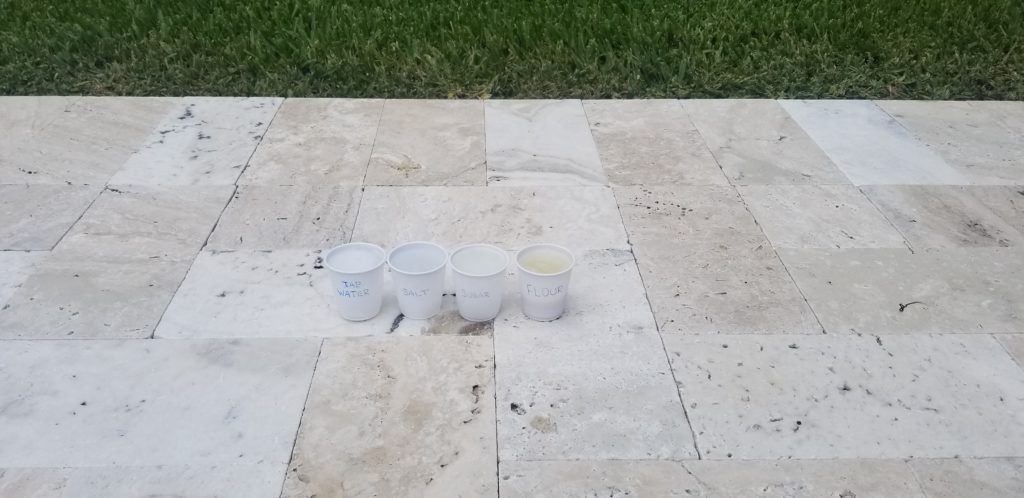
Step 6
Remove each Dixie cup from the freezer and place outside in the sun.
Step 7
Press “start” on your stopwatch and watch as your ice samples start to melt. When one of the ice cubes melts completely, record the time under the correct column for that sample. Keep the timer running and record the time it takes for each ice cube to fully melt. You may stop the stopwatch after the last ice cube melts.
Variations to Experiment
If you live by a beach, lake, or pond, try taking a water sample from some natural water bodies near you to compare in this experiment. This will help you observe more directly how the sun affects different bodies of water on our planet, depending on the type and amount of dissolved solutes they contain.
Share Your Results
- Which ice cube sample melted the fastest? Why?
- Did the flour cause the ice to melt faster? Why not? (use Google to help find the answer if you need to).
Conclusions:
Salt lowers the freezing/melting point of water/ice. When the salty ice cube was placed in the sun, the lower freezing point combined with continuous heat from the sun made the ice melt much faster. Sugar is also soluble in water, and also lowered the freezing/melting point of the water, but sugar does not make ice melt as fast as salt does. Flour does not cause the ice cube to melt faster because the flour has almost the same freezing/melting point as pure water.
Extension:
Temperature is not the only thing that determines how ice/water melts and freezes on our planet. When rainwater comes into contact with soil and rock material, some of that material dissolves in the water. Because of this, many of the water bodies on Earth (lakes, rivers, bays, lagoons, ponds, streams, oceans, etc.) can be thought of as chemical solutions. The ocean contains a high concentration of dissolved salts. As you learned in this experiment, salt lowers the freezing/melting point of water.
The ocean begins to freeze when it reaches a temperature of -1.9°C. In the winter, polar sea ice covers about 25 million square kilometers of Earth’s surface at the Southern Ocean and the Arctic Ocean. About 80% of this ice melts and mixes with the ocean seawater each summer. When winter comes around the next year and temperatures reach -1.9°C, the water at the poles freeze again and form sea ice.
Our planet is experiencing global climate change and an increase in global temperatures due to burning fossil fuels. Scientists have proven that the amount of sea ice in the Arctic Ocean has been declining rapidly over the past few decades because of this warming trend.
Extension Questions:
- Based on what you learned about how temperature and dissolved solutes affect the melting/freezing of water: What could happen to polar sea ice in the winter if our planet becomes just 1°C warmer? How about 2°C warmer?









